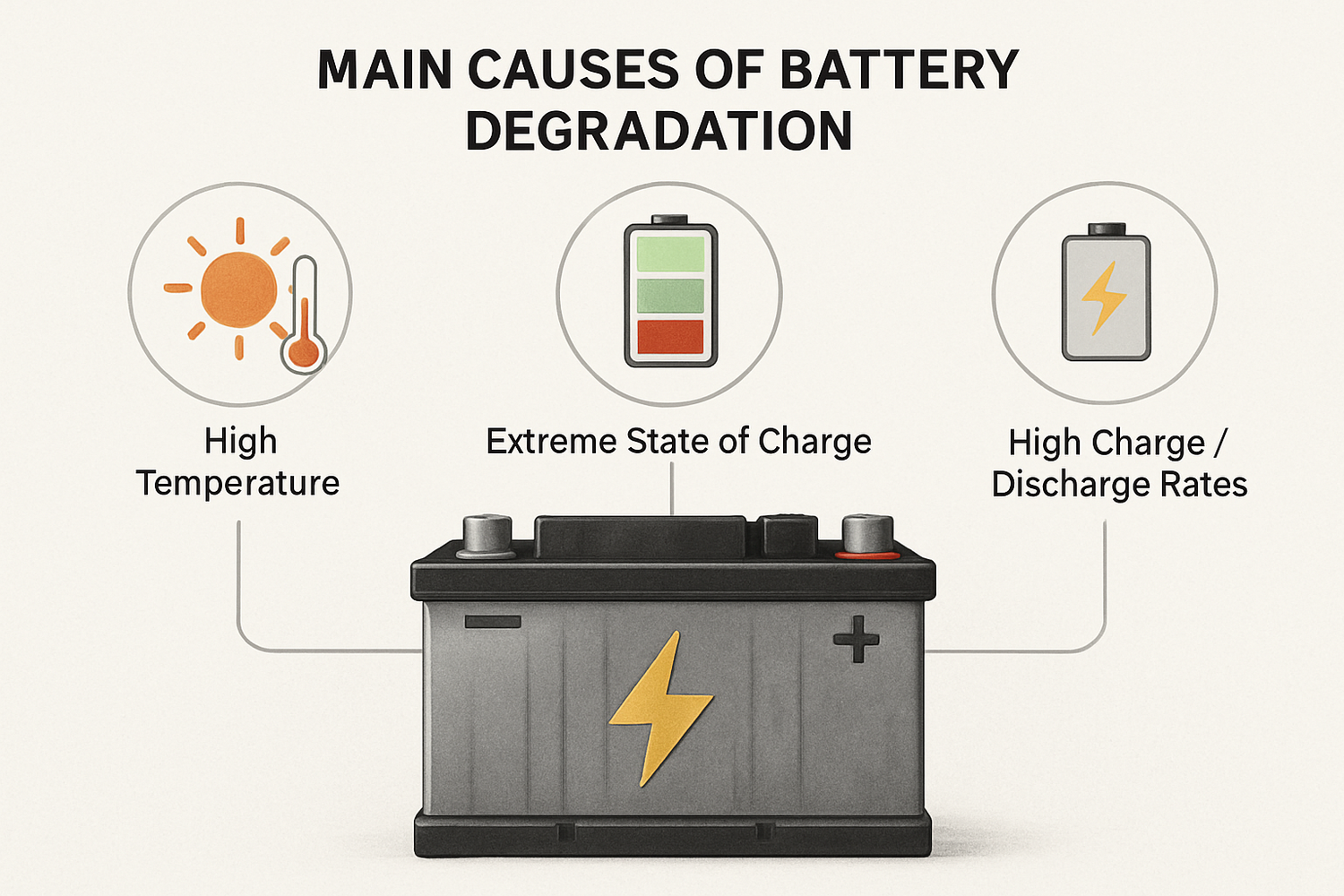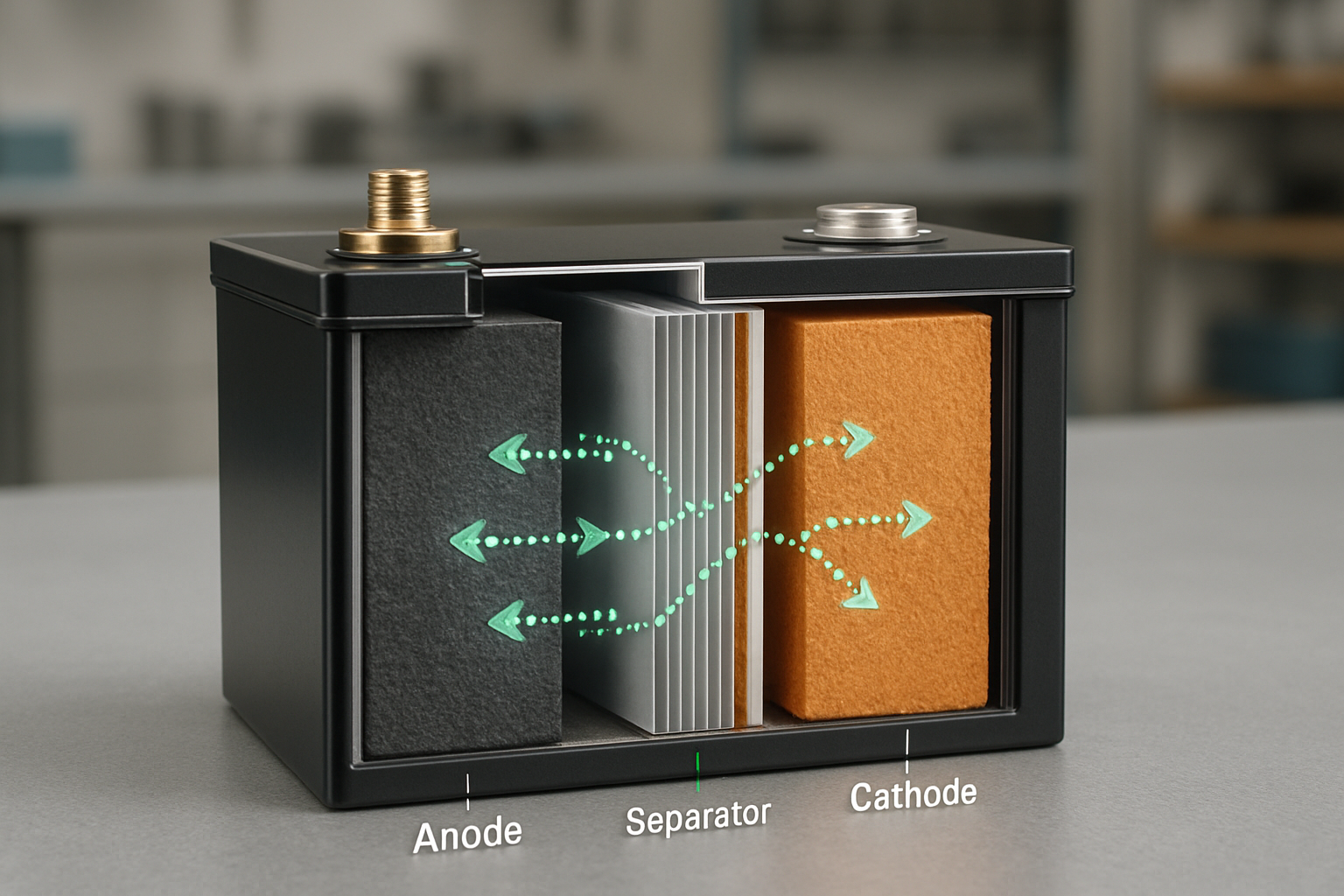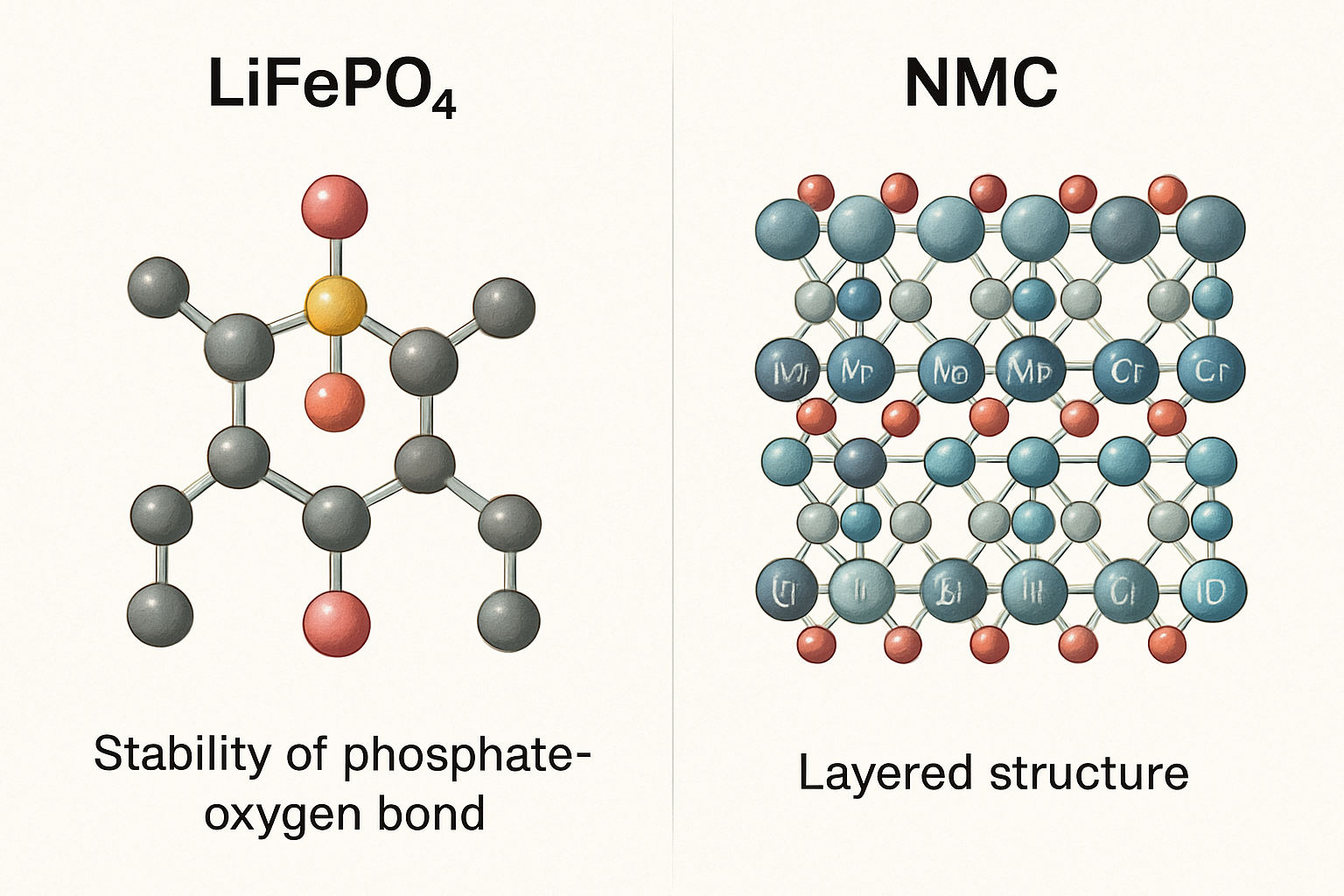A battery is the heart of any solar energy storage system. Its health directly impacts your energy independence and the return on your investment. Battery degradation, a gradual loss of capacity, is a natural process. However, you can significantly influence the rate of this decline. Understanding the factors that cause degradation and implementing effective prevention strategies will help you extend your battery’s lifespan and optimize its performance for years to come.
Understanding the Core Causes of Battery Degradation
Battery health management begins with recognizing the primary factors that contribute to capacity loss. These elements, often working in combination, determine how gracefully your battery ages.
The Impact of Temperature Extremes
Temperature is a critical factor in battery health. High temperatures accelerate the internal chemical reactions, leading to faster degradation of components and a permanent reduction in storage capacity. Conversely, operating a battery in extremely cold conditions can reduce its efficiency and, during charging, may lead to lithium plating, which can cause irreversible damage. Maintaining a stable, moderate temperature is one of the most effective ways to preserve battery health.
Charge and Discharge Cycles (Cyclic Aging)
Every time a battery charges and discharges, it completes a cycle. This process causes minor physical and chemical changes within the battery cells, contributing to what is known as cyclic aging. The depth of these cycles, or Depth of Discharge (DoD), plays a significant role. A shallow discharge (e.g., using only 30% of the battery’s capacity) is less stressful on the battery than a deep discharge (e.g., using 90% of its capacity). Over time, the cumulative effect of these cycles leads to a gradual decline in the battery’s ability to hold a full charge. A battery reaches its end-of-life (EoL) when it can only retain a fraction, typically 70-80%, of its original capacity.
State of Charge (SoC) and Its Influence
The State of Charge (SoC) refers to the battery’s current charge level. Keeping a battery at very high or very low SoC for extended periods can accelerate degradation. For instance, a battery stored at 100% charge experiences higher internal voltage, which stresses its components. Similarly, leaving it completely depleted can lead to harmful chemical reactions. Research shows that degradation can be limited if the battery is kept within a moderate SoC range. According to the Innovation Outlook: Smart charging for electric vehicles report, keeping a battery between 60-80% SoC can significantly mitigate degradation, with an impact similar to that of normal AC charging.
Proven Strategies to Extend Battery Lifespan
You can actively manage your battery’s health with several practical strategies. These methods focus on mitigating the primary causes of degradation and creating an optimal operating environment.
Mastering Temperature Control
Effective thermal management is non-negotiable. Ensure your battery storage system is installed in a location with adequate ventilation to dissipate heat. Avoid placing it in direct sunlight or in areas prone to extreme temperature fluctuations. For larger systems, a climate-controlled enclosure can provide the stable environment needed for a long and productive service life. Most lithium iron phosphate (LiFePO4) batteries perform best in temperatures between 15°C and 25°C (59°F and 77°F).
Optimizing Charging and Discharging Habits
Your usage patterns have a direct impact on battery longevity. Instead of running the battery from full to empty, aim for partial charge cycles. If your system allows, set the maximum SoC to 90% and the minimum to 20%. This simple adjustment avoids the stress of extreme charge levels. Additionally, use a charger designed for your specific battery chemistry and avoid unnecessarily high charge or discharge rates (C-rates), as high currents generate excess heat and strain battery components.
The Role of a Battery Management System (BMS)
A high-quality Battery Management System (BMS) is the brain of your battery pack. It serves as a crucial safeguard, continuously monitoring key parameters like individual cell voltage, temperature, and overall SoC. The BMS protects against potentially damaging events such as overcharging, over-discharging, short circuits, and overheating. It ensures each cell in the battery pack is balanced, preventing individual cells from becoming stressed, which is fundamental for both safety and lifespan.
Advanced Concepts in Battery Health Management
For those looking to maximize their system’s potential, a deeper understanding of battery science offers further advantages. These concepts provide insight into the trade-offs involved in energy storage.
Understanding Depth of Discharge (DoD)
Depth of Discharge directly correlates with the total number of cycles a battery can deliver. A lower DoD leads to a significantly longer cycle life. While using less of the battery’s capacity in each cycle means you may need a larger battery bank for your energy needs, the long-term benefit is a much greater lifespan. This trade-off is crucial for designing a system that balances upfront cost with long-term value.
| Depth of Discharge (DoD) | Estimated Cycle Life (LiFePO4) |
|---|---|
| 100% | 2,500 - 3,000 cycles |
| 80% | 4,000 - 5,000 cycles |
| 50% | 6,000 - 8,000 cycles |
| 25% | 10,000+ cycles |
Disclaimer: These are generalized estimates. Actual cycle life can vary based on manufacturer, temperature, and C-rate.
Calendar Aging vs. Cyclic Aging
Batteries degrade in two ways: through use (cyclic aging) and simply over time (calendar aging). Calendar aging occurs regardless of how many cycles the battery completes. Its primary drivers are, once again, temperature and sustained high SoC. This is why a battery stored in a hot environment for a year, even if unused, will have lower capacity than one stored at a moderate temperature. Managing both cyclic and calendar aging is necessary for comprehensive battery care.
Second-Life Batteries and Sustainability
The conversation around battery degradation also includes sustainability. As electric vehicles become more common, there is a growing supply of batteries that are no longer suitable for automotive use but still retain significant capacity. The International Energy Agency highlights the potential of these second-life batteries for stationary storage in its The State of Energy Innovation report. This practice promotes a circular economy, though challenges in diagnostic testing and standardization remain. The ability to accurately assess the health of a used battery is crucial for its effective redeployment.
A Final Perspective
Protecting your battery from degradation is not about stopping an inevitable process, but about managing it intelligently. By controlling temperature, optimizing charge cycles, and relying on a sophisticated BMS, you can significantly extend the life of your energy storage system. Proactive management ensures your system operates reliably and efficiently, maximizing its value and your energy independence. While estimating storage costs can be complex due to these variables, as noted in the Renewable Power Generation Costs in 2024 analysis, controlling degradation is a direct way to improve the economic viability of your investment.
Frequently Asked Questions
What is the ideal State of Charge (SoC) to store a lithium battery?
For long-term storage, an SoC of around 50% is often recommended. This level minimizes stress on the battery''s internal components and slows the rate of calendar aging.
How much does temperature really affect battery life?
Temperature is one of the most significant factors in battery degradation. Consistently high temperatures can drastically reduce lifespan, sometimes by as much as half for every 10°C (18°F) increase above the optimal range of 20-25°C.
Is it bad to leave my battery storage system fully charged?
While a modern BMS prevents dangerous overcharging, keeping a lithium battery at a 100% state of charge for prolonged periods can accelerate calendar aging due to higher internal cell voltage. It is better to use the stored energy or set a charge limit just below 100% if your system has that capability.





Leave a comment
All comments are moderated before being published.
This site is protected by hCaptcha and the hCaptcha Privacy Policy and Terms of Service apply.